How the Lives of Four Brothers with Autism Changed During the Pandemic
June 10, 2020
June 10, 2020
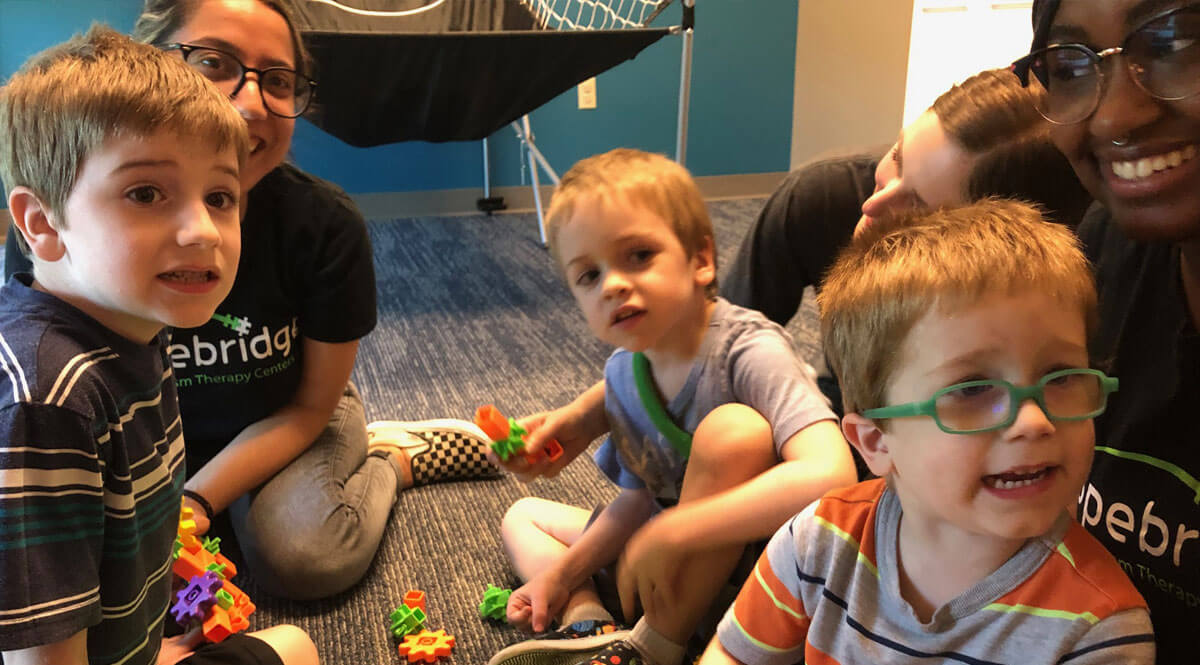
To say COVID-19 has disrupted the lives of individuals around the world is an understatement, even for those who have not come into contact with the coronavirus. For children touched by autism spectrum disorder (ASD), the challenges are multiplied. Now imagine living as a family with four children – all on the spectrum – and having your therapy, routines and schedules upended. It’s a lot to digest, as we heard first-hand from one Hopebridge mom, Laura.
Three of her children Neil, Eric and Drew, ages 3, 5 and 7, respectively, regularly attend Hopebridge in Glendale, Arizona for applied behavior analysis (ABA therapy). The oldest son, James, also has ASD but receives his education within a mainstream classroom at his local elementary school.

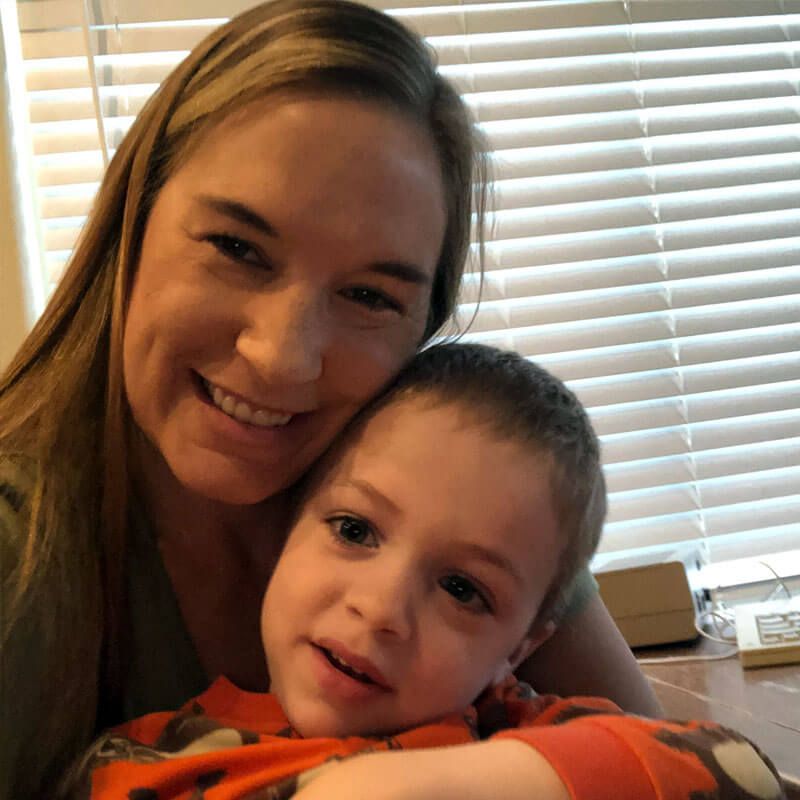
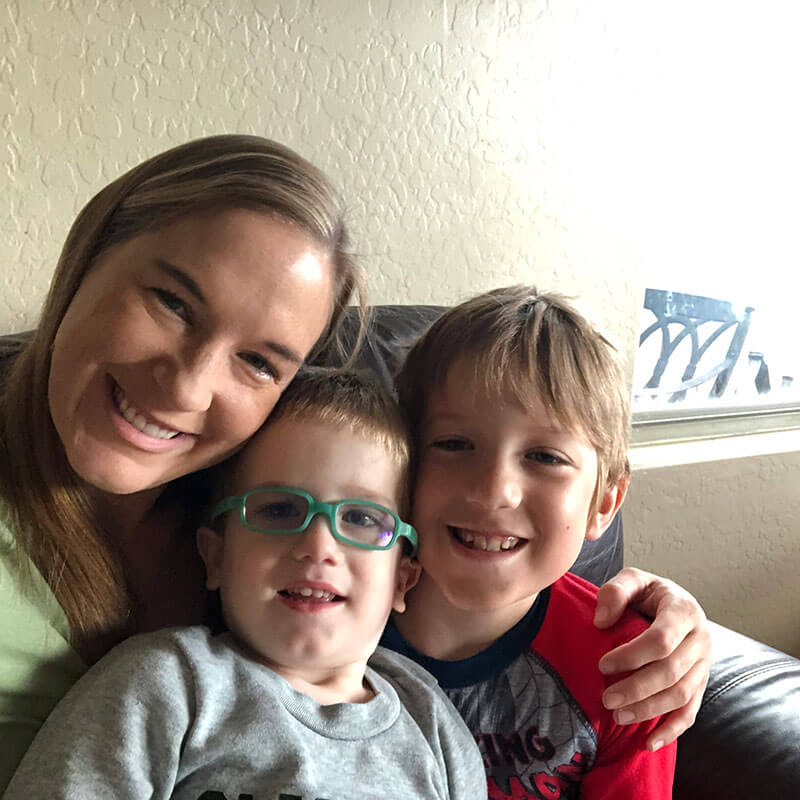
Therapy has a huge impact on this family, so when the pandemic caused businesses to temporarily halt services, including many health clinics like Hopebridge Autism Therapy Centers, it took its toll on the boys and their parents.
“Of course I didn’t want to put my kids at risk or unknowingly pass it to someone else, so we understood the need to close, but the experience at home was tough,” Laura told us. “My children thrive on structure and routine. Therapy is their structure; it’s part of their daily schedule. Their routine changed and it was difficult to explain why.”
Since Laura and Hopebridge BCBA Katy DeToma regularly meet for parent training as part of the boys’ personalized program, they worked to prepare for a possible pause in services before it was official in Glendale. Laura was proactive in asking for support and Katy was able to provide her with a list of schedules, preferred activities, art projects, web links and other materials she could use as resources for a few weeks. It was especially important to have shared schedules and ideas for the boys to interact together, as well as to play appropriately on their own.
“With four kids at home, I knew any sort of closure or quarantine would be particularly difficult for them, even with the opportunity for telehealth therapy, so it was important to work together in advance,” said Katy. “I am impressed with the schedules Laura created. She made her home as structured as it could be during that time.”
With support from Katy, Laura was able to implement her own version of the center routine pretty quickly. The boys took part in circle time video sessions, quiet play activities, labeling games, sensory play through PlayDoh slime and kinetic sand, and art projects while their older brother practiced piano, amongst other learning opportunities.
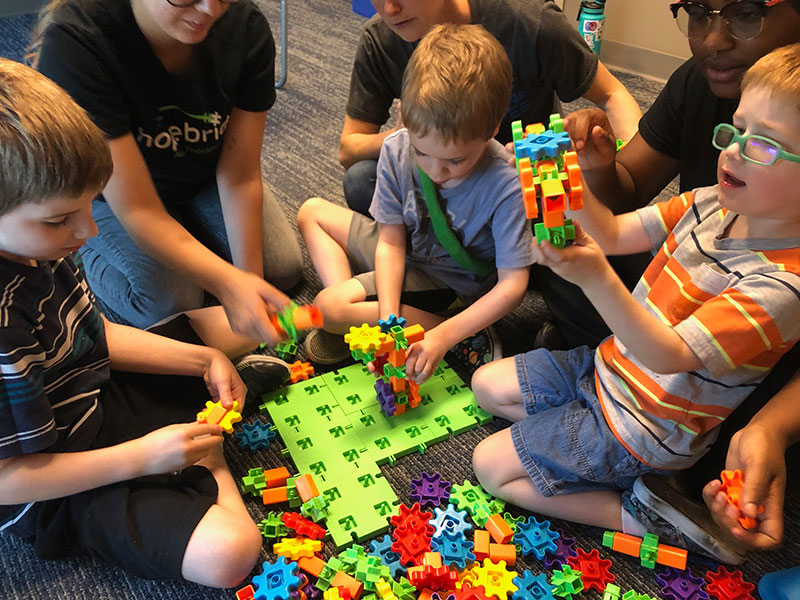
“The first time I turned on one of the videos, Neil said to me, ‘want to go circle time?’ He asked about it every day. I wouldn’t have known what he wanted if Katy hadn’t prepared me,” said Laura.
Because local government and health agencies determined that Hopebridge provides essential medical therapy services, the centers were able to reopen within a short time. Since they have been back at the center, Laura told us she appreciates the extra care the team provides for their safety, such as limiting the number of people within a room and the additional hand-washing procedures. She says the only real differences she feels are pickup and drop-off, which with three kids at Hopebridge – including one who is prone to eloping – are now easier since therapists come to get them at the car.
“When the centers were closed, it was stressful and scary and there was no way to know how long it would last,” said Laura. “I was concerned about regression. There was a little due to massive changes, but my sons have been able to get back on track and are already progressing.”
So before all of this, how did this family’s autism journey begin?
It started when Drew was 2 years old. Since he was not yet speaking, his primary care pediatrician recommended his parents visit a developmental pediatrician, who then diagnosed him with autism.
Laura dove into reading all she could about ASD to help her son and when she learned more about the diagnostic criteria for autism, she noticed some of her oldest son’s behaviors overlapped.
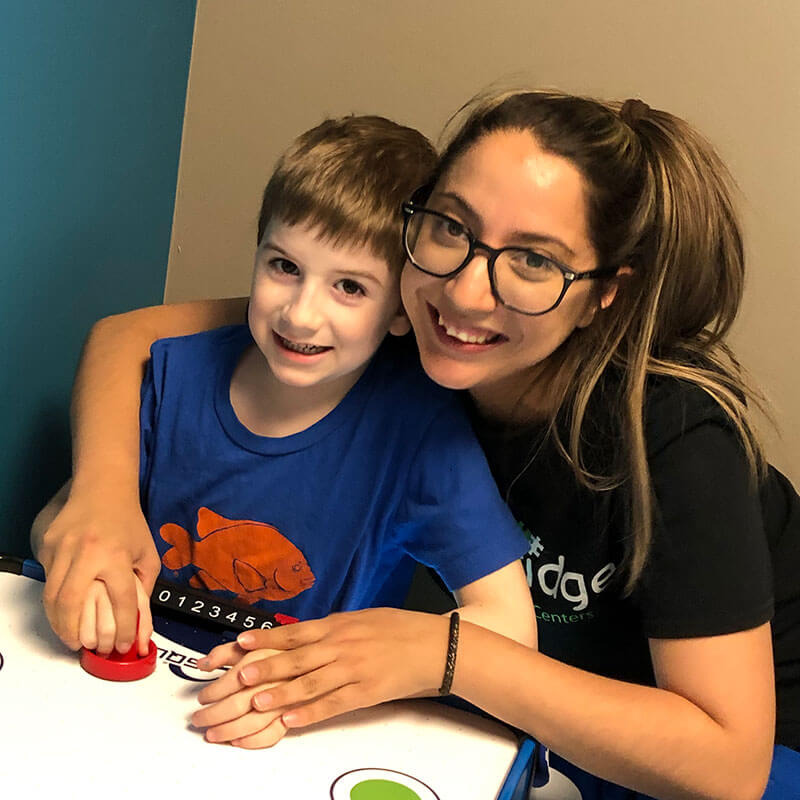
“While learning more about what autism looks like, it started to ring a bell. Some might think James just has some quirky tendencies, but we took him for an evaluation later that year to be sure,” said Laura. “He was diagnosed with ASD. They told us if Asperger’s Disorder was still a diagnosis, that is how his would be classified.”
From there, Laura says she began watching Eric like a hawk. He was still not speaking much by a year and was ultimately diagnosed at 18 months of age.
By the time their youngest son, Neil, was born, they included him in a milestones program for younger siblings of children with autism. Through the program, infants are monitored every six months. When some of the early signs of autism appeared by 12 months of age, they pursued a full diagnostic evaluation and continued with early intervention.
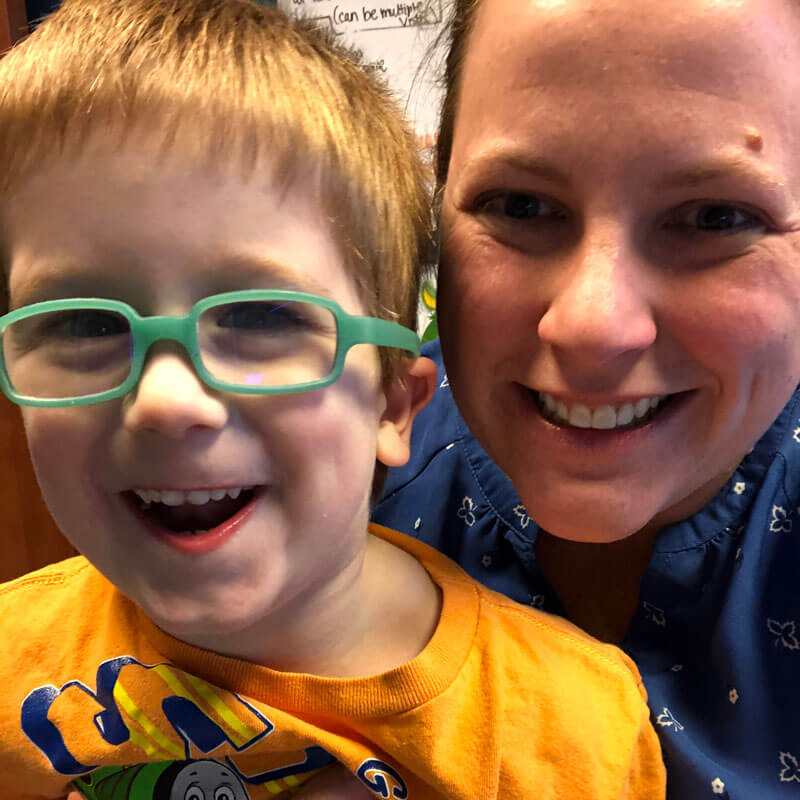
“I understand some parents choose to wait to get an evaluation, but it was my goal to find out as early as possible for my sons,” said Laura. “Receiving the autism diagnosis was not so much about giving them a label as it was about opening the door to the services they need for a better life.”
Laura and her family learned about Hopebridge through one of Arizona’s autism support groups on Facebook as well as through a team member who worked at the new center. To begin ABA therapy at Hopebridge, Eric still required a formal ADOS-2 diagnostic evaluation while Drew and Neil participated in ABA evaluations.
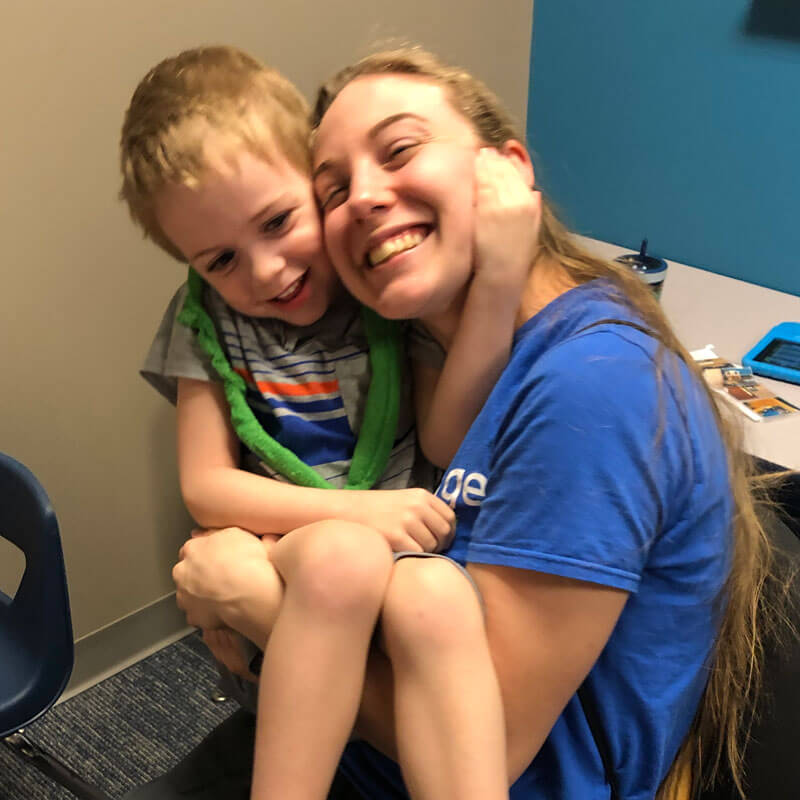
Speaking of her first impression, Laura told us she liked the setup of the center, from the individualized therapy rooms to the gym for social interaction, plus the fact each child has his own therapist.
“Since they were paired with new people, my two oldest kids tried to get away with a lot in the beginning, but the staff was kind and patient. Both have since settled in and are doing great,” said Laura. “Every day, they grab their backpacks and get in the car, ready to be dropped off. My kids love their therapists. Even if they don’t express it verbally, I can see it in their faces.”
The youngest, Neil, is known as Mr. Personality and his mom refers to him as the hall monitor or cruise director, since this sweet kid always wants to make sure everyone is doing what they are supposed to be doing. He loves to play with trains, just like his older brother Eric. When he first started at Hopebridge, communication was a challenge and his mom tells us he would often cry for attention…but now he’s speaking and making friends like a champ! He is already working on preschool skills.
Eric is a sweet soul and the most reserved of the four boys. He tends to keep to himself and especially loves numbers and counting. He will watch timers, push buttons on the microwave and repeat numbers he sees on the clock. His mom says he is likely always counting in his head. Eric’s communication is blossoming and he is currently working on speaking independently without the use of prompts. He also plays with a variety of toys more appropriately, rather than only focusing on higher stimulatory options.
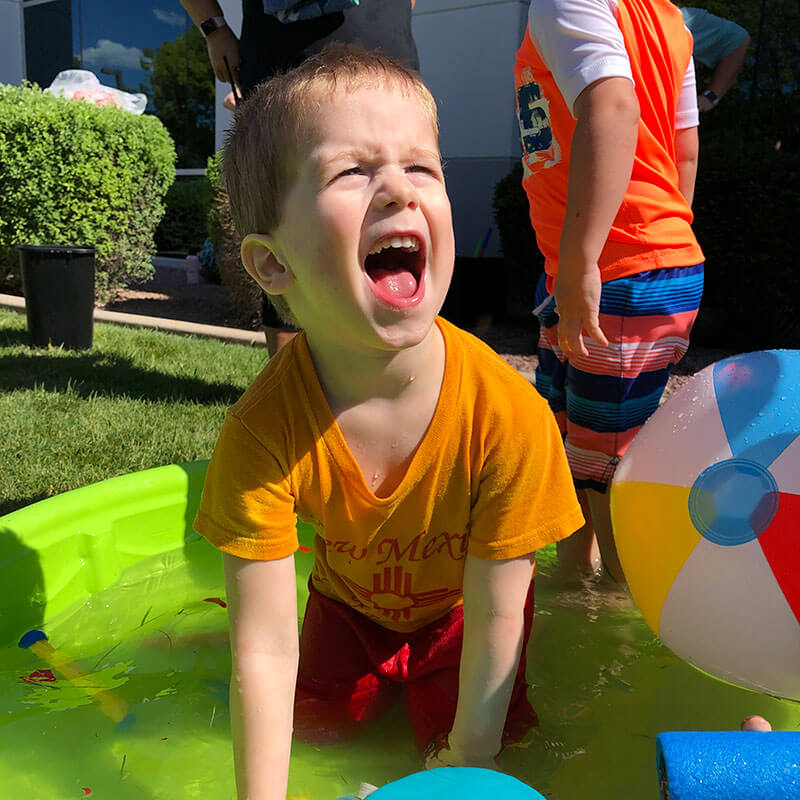
Drew, the oldest of the three sons at Hopebridge, is a busy bee and a nice kid just like his brothers. He loves his tablet and his sensory swing, which he uses like Tarzan. When he began at Hopebridge, he was nonverbal. Laura now describes him as pre-verbal, as Drew is beginning word approximations and uses touch chat as his primary communication mode. His handwriting has also improved, but his mom feels his most impactful goal since joining Hopebridge is full success with toilet-training. Drew attends Hopebridge for full-time ABA therapy and Laura believes the one-on-one attention he currently receives will eventually help him successfully transition back to school.
James, the oldest brother, is a fan of watching YouTube videos, riding his bike and playing his piano. He does not attend Hopebridge for therapy, but has visited the clinic on occasion and likes it so much his mother says he wishes he could attend too!
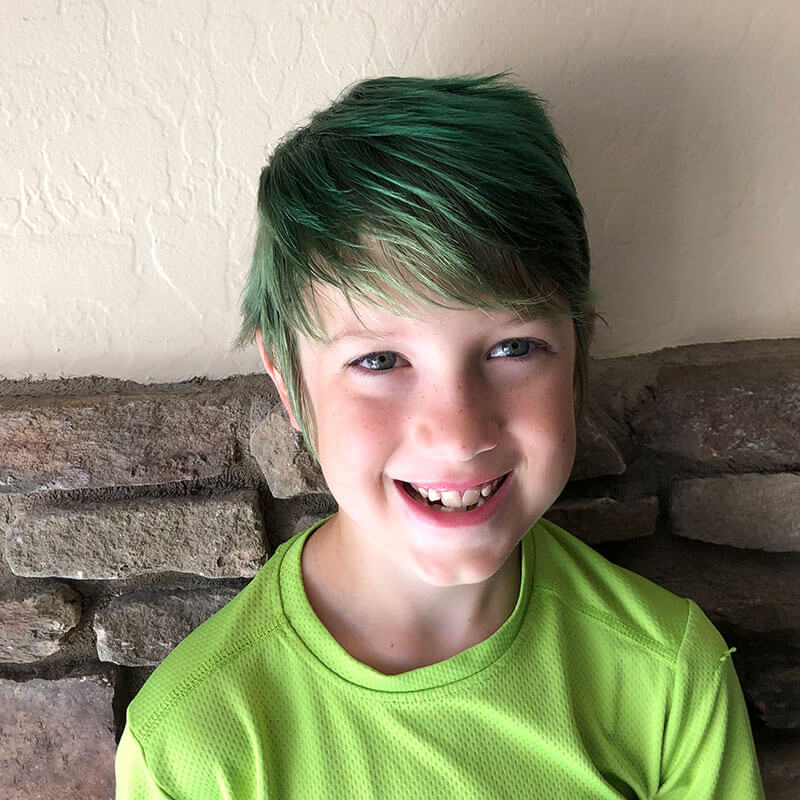
“Hopebridge has a welcoming, family environment. For some reason, it feels less clinical, which is important for us,” said Laura. “It is good for my kids because everything they do is play-based and fun, so they do not even realize they’re working.”
Laura believes a significant benefit of Hopebridge’s center-based therapy is the sibling play time they are given. At least once a day, their therapy teams gather the three brothers to play together cooperatively. For instance, when Neil is playing with trains, the therapists will ask if his brothers want to come play with him, which encourages him to work on tolerance and peer play. They also work on safety skills, like hand-holding and staying on the sidewalk together. At the end of each day, they wait for their mom as a group, so the therapy team develops activities they can participate in together until pick-up.
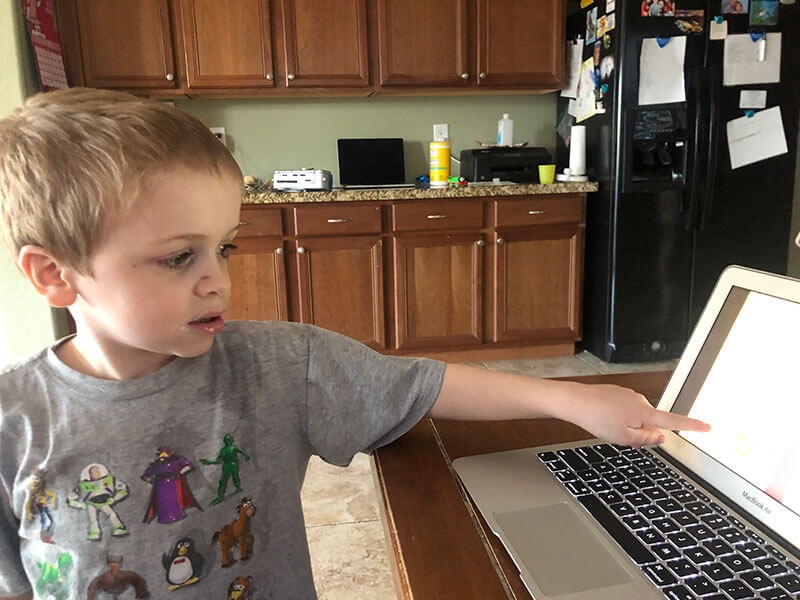
“When they first started, the boys didn’t really notice each other, but now they not only recognize each other in the halls, they make eye contact. They are excited to name their brothers when we see them,” said Katy. “During one parent training, I asked Laura to come back. All three were thrilled to see her inside the center and wanted to pull her into their rooms to show off.”
When we asked Laura her advice for other parents embarking on the autism journey, she emphasized that parents should do their own research on all of the options and not to immediately dismiss certain types of therapies.
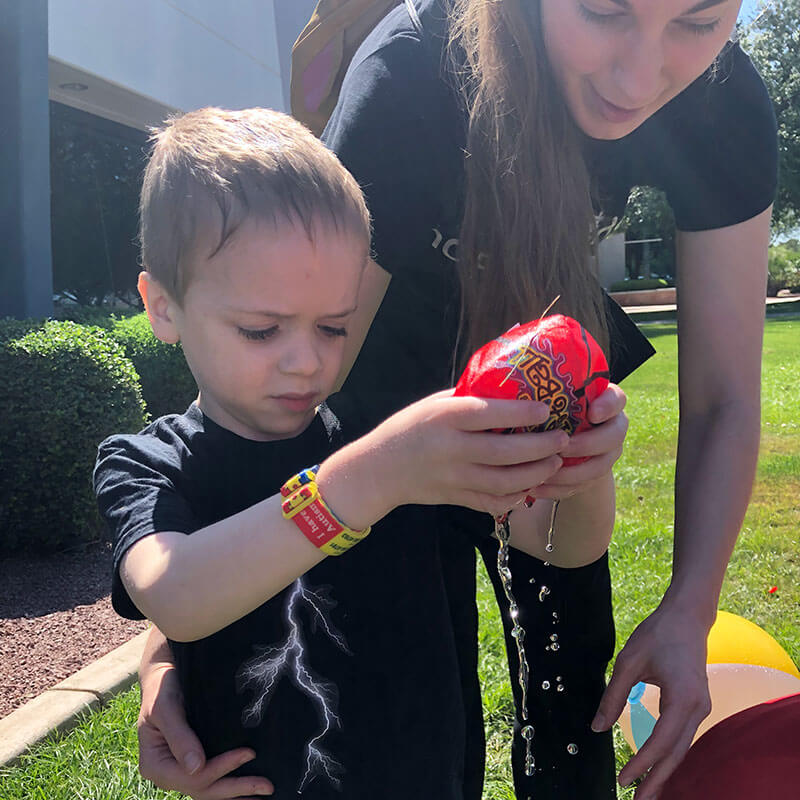
“I have been on this autism journey for five years with four kids. I have heard some controversy surrounding ABA therapy in the past, but I do not feel it is the same as the opposition describes. My kids are not forced to do anything at Hopebridge; instead they play and interact socially, while also building skills,” said Laura. “That is my personal opinion, but do your own research. You know your kid better than anyone else and will know what is best for them to grow.”
“My first kiddo at Hopebridge was Drew. The first day at the center he raced past me and darted around the corner with no warning. I chased after him to find him in the gym, taking off his shoes and socks and putting them in a cubby like that’s where they were supposed to go. Then he laid on the floor and put his hands behind his head and smiled like he owned the place. That moment was one of many laughs I shared with Drew. He is a determined, smart, and inquisitive young guy who has made amazing progress throughout this journey! I’m so proud of him and I can honestly say that while I was trying to teach him, he taught me so much more.”
Kelsey Hobson, Hopebridge RBT Trainer
“When meeting the brothers for the first time, it felt like meeting celebrities because everyone around the clinic knew them. Working with the youngest of them all has been so rewarding. When I first started working with Neil, he struggled with social interactions with both friends and his siblings. Playing games with a friend while taking turns and following one-step instruction was rather difficult. Working with him today, he is eager to play with others, takes turns, celebrates his peers when they win or meet a goal, and follows multi-step instruction while peer playing! Seeing the joy on his face while he plays games like ‘red light, green light,’ tag, basketball, or any other game is extremely rewarding because what used to spark a challenge has now flourished. Beyond playing with friends, Neil is more attentive to taking turns with his brothers and celebrating them in their successes! It has been such an honor to be a part of the journey.”
Daniella Gentile, Hopebridge RBT and Behavior Analysis Fellowship Student
“I am so happy I got the opportunity to get to know Eric! He is such a bright, hard-working, and unique kid. While I was working with him, I could really see the gears turning in his mind when learning new things and the effort that he put in. I loved experiencing moments of victory with him as we mastered skills and began to learn new targets. I can’t wait to see how much he continues to grow and develop. He is truly amazing and brings joys to the lives of everyone around him.”
Rikki Rackley, Hopebridge RBT Trainer
“Drew is such a great big brother to his two younger brothers. Some of the sweetest moments of working with him is when he requests to go play with his brothers. We have gone on so many brothers’ scavenger hunts at the center. The smile, oh that contagious smile, when he sees his brothers is the sweetest thing of all because you know it’s pure love. When he enters a room and Eric or Neil are there, Drew’s first instinct is to greet them and see what they are doing. The warmth of the environment just makes your tummy fill with joy. When you see all the brothers together, it truly melts your heart and makes what we do so much more special.”
Marisela Salas, Hopebridge RBT and Behavior Analysis Fellowship Student
“Eric’s energy and heart light up any room he enters. He loves connecting with me over his preferred activities. I have seen such a transformation in the time I have spent with him thanks to the whole team approach and his willingness to learn. He is an absolute joy to be around and work with and he makes me so proud to watch his progress. GO ERIC!”
Bri Bennett, Hopebridge RBT
Are you concerned with certain areas of your child’s development and want to explore it? Contact us at Hopebridge for an ABA or diagnostic evaluation to find out what we can do to help your child and family lead your best lives.
*Informed consent was obtained from the participants in this article. This information should not be captured and reused without express permission from Hopebridge, LLC.
Kiddo Spotlight
March 08, 2021
Sawyer Shines in Interdisciplinary Autism Therapy Program at Hopebridge
Kiddo Spotlight
March 03, 2022
Moving on From ABA Therapy and Into the Classroom: Santino Loves Going to School
Kiddo Spotlight
June 13, 2022
Kids – and Parents – Build Friendships at Hopebridge Autism Therapy Centers